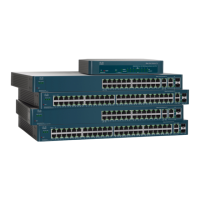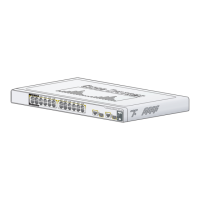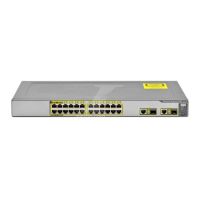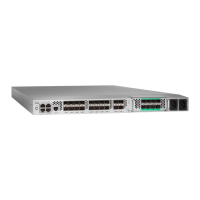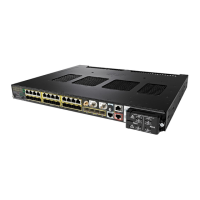Administration: Stack Management
Overview
Cisco 500 Series Stackable Managed Switch Administration Guide 72
5
The devices (units) in a stack are connected through stack ports. These devices
are then collectively managed as a single logical device. In some cases, stack
ports can become members in Link Aggregation Groups (LAGs) increasing the
bandwidth of the stack port. See Stack Port Link Aggregation.
The stack is based on a model of a single master/backup and multiple slaves.
An example of eight devices connected into a stack is shown in the following:
Stack Architecture (Chain Topology)
A stack provides the following benefits:
• Network capacity can be expanded or contracted dynamically. By adding a
unit, the administrator can dynamically increase the number of ports in the
stack while maintaining a single point of management. Similarly, units can
be removed to decrease network capacity.
• The stacked system supports redundancy in the following ways:
- The backup unit becomes the master of the stack if the original master
fails.
- The stack system supports two types of topologies: chain (see “Stack
Architecture (Chain Topology)”and ring (see “Stack in Ring
Topolo gy”). In ring topology, if one of the stack ports fails, the stack
continues to function in chain topology (see Stack Topology).
- A process known as Fast Stack Link Failover is supported on the ports in
a ring stack to reduce the duration of data packet loss when one of the
stack ports link fails. Until the stack recovers to the new chain topology,
the stack port that is currently down, loops-back the packets that were
supposed to be sent through it, so that the packets arrive at their
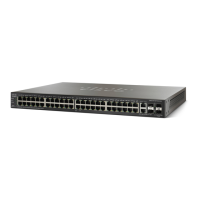
